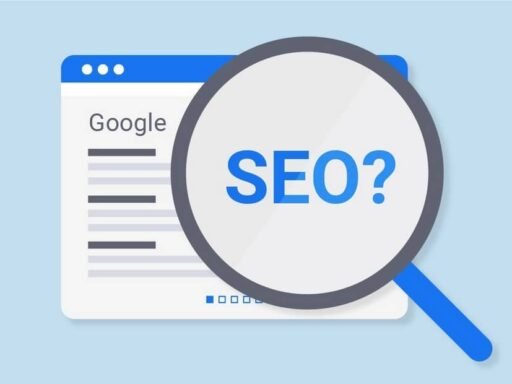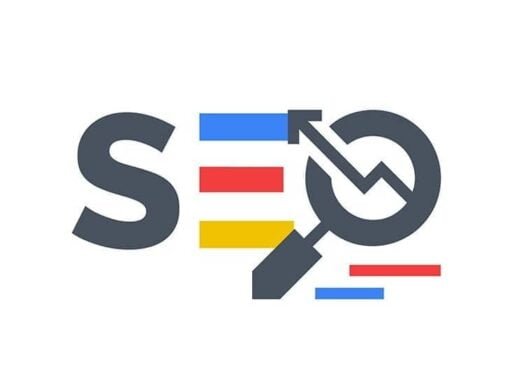Scaling a business is an exciting milestone, and with the right tools and strategies, it becomes an achievable goal. If you’re using Shopify as your e-commerce platform, you’re already one step ahead in scaling your business. Shopify provides a user-friendly platform that makes scaling easier, allowing you to focus on growing your brand.
In this article, we will explore advanced tips and tricks to help you scale your business on Shopify. From optimizing website performance to implementing cross-selling techniques, we’ll cover key strategies that can supercharge your growth. Whether you’re a seasoned entrepreneur or just starting out, these tips will empower you to take your Shopify store to the next level.
Key Takeaways:
- Optimizing website performance is crucial for scaling a Shopify store. Use tools like Google PageSpeed Insights and GTmetrix to identify areas for improvement.
- Product page optimization is essential for attracting customers and boosting sales.
- Cross-selling can increase average order value and customer satisfaction.
- Consider starting Shopify dropshipping for a low-cost, scalable business model.
- Proper inventory management and fulfillment strategies are vital for efficient operations.
Ways to Scale a Shopify Store
To scale your Shopify store successfully and unlock its true potential for growth, there are several key tips you should consider. By implementing these strategies, you can optimize your website, improve your product pages, leverage cross-selling techniques, explore dropshipping, manage your inventory effectively, and prioritize marketing and customer acquisition. These tips are designed to not only make scaling easier in the present but also set a solid foundation for future growth potential.
Let’s explore each of these tips in more detail:
1. Optimize Website Performance
- Improve loading speed to provide a seamless browsing experience for customers.
- Optimize images and code to minimize page load times.
- Choose optimized plugins and themes to enhance website performance.
- Optimize server response time to ensure quick and efficient data retrieval.
2. Improve Product Pages
- Enhance your SEO ranking by using relevant keywords throughout your product pages.
- Optimize product descriptions with persuasive and informative content.
- Optimize images and videos to showcase your products effectively.
- Create clear and convincing product descriptions to drive conversions.
- Provide incentives for purchases, such as discounts or free shipping offers.
3. Implement Cross-Selling Techniques
- Offer complementary products or add-ons to customers during the purchasing process.
- Boost average order value by suggesting related items that complement their purchases.
- Increase customer lifetime value by encouraging repeat purchases through cross-selling.
- Improve customer satisfaction by providing personalized and relevant product recommendations.
4. Start Shopify Dropshipping
- Take advantage of the low startup costs and broad product selection offered by dropshipping.
- Expand your product range without the need to maintain inventory or handle shipping.
- Enjoy the flexibility to operate your business from anywhere, anytime.
- Scale your business effortlessly as demand grows.
5. Manage Inventory Effectively
- Utilize a multi-channel inventory management system to streamline operations.
- Implement cutting-edge inventory management techniques to optimize stock levels.
- Automate inventory management processes to save time and reduce errors.
- Diversify your supply chain and fulfillment options for improved efficiency.
- Monitor inventory performance and customer feedback to make data-driven decisions.
6. Focus on Marketing and Customer Acquisition
- Expand your marketing channels to reach a wider audience.
- Create concrete and irresistible offers to attract new customers.
- Utilize custom landing pages to increase conversion rates.
- Optimize banner cart recovery rates to minimize abandoned carts.
- Implement a well-rounded ad strategy to boost brand awareness and drive sales.
By implementing these tips and strategies, you can position your Shopify store for success and unlock its true potential for scaling and future growth. Keep in mind that scaling your business is an ongoing process, so continuously monitor and optimize your strategies to stay ahead of the competition and achieve long-term success.
Optimize Website Performance
Optimizing website performance is crucial for scaling your Shopify store. A slow-loading website can lead to high bounce rates and poor user experience, ultimately impacting your conversion rates and sales. To ensure your website performs at its best, consider the following Shopify tips and tricks:
1. Improve Loading Speed
A fast-loading website is essential for providing a seamless browsing experience to your visitors. Optimize your website’s loading speed by compressing images, minifying CSS and JavaScript files, and leveraging browser caching.
2. Optimize Images
Large image files can significantly slow down your website. Resize and compress images without compromising their quality to reduce file size and improve loading speed. Additionally, consider lazy loading images to improve initial page load times.
3. Optimize Code
Clean and efficient code improves website performance. Minify your HTML, CSS, and JavaScript files to remove unnecessary characters, spaces, and comments. Eliminate unused or redundant code to reduce file sizes and improve website speed.
4. Choose Optimized Plugins and Themes
When selecting plugins and themes for your Shopify store, opt for optimized options that are designed to enhance website performance. Look for plugins and themes that have been reviewed positively in terms of speed and optimization.
5. Optimize Server Response Time
Ensure your website is hosted on a reliable server with a fast response time. High server response times can lead to increased page load times. Consider using Shopify’s CDN (Content Delivery Network) to cache and serve your website’s static content for faster delivery.
By implementing these website performance optimization techniques, you can create a fast and responsive Shopify store that enhances the user experience and boosts your chances of scaling successfully.
Optimize Your Product Pages
Optimizing your product pages is crucial for the success of your Shopify store. By improving your SEO ranking, enhancing the user experience, and effectively showcasing your products, you can attract more customers and drive sales. Here are some techniques for optimizing your product pages:
- Use relevant keywords: Incorporate keywords in your product titles, descriptions, and tags to improve search engine visibility.
- Optimize product descriptions: Write compelling and concise descriptions that highlight the key features and benefits of your products.
- Optimize images and videos: Use high-quality visuals that accurately represent your products. Compress images to improve page load speed.
- Create clear and convincing product descriptions: Clearly communicate the value proposition of your products and address any potential customer concerns.
- Provide incentives for purchases: Offer special promotions, discounts, or free shipping to encourage customers to make a purchase.
By optimizing your product pages, you can improve the visibility of your products, attract more customers, and ultimately achieve success for your Shopify store.
Cross-Sell
Cross-selling is a powerful sales technique that can greatly impact your Shopify sales. By offering customers complementary products or add-ons to their purchases, you can increase the average order value, boost customer lifetime value, improve customer satisfaction, and reduce returns and complaints. The key to effective cross-selling lies in understanding your customers’ needs and interests.
Benefits of Cross-Selling:
- Increased average order value
- Boosted customer lifetime value
- Improved customer satisfaction
- Reduced returns and complaints
Implementing cross-selling strategies can help you maximize the potential of each customer transaction, leading to increased profitability and growth for your Shopify store. By suggesting relevant products or add-ons that complement their purchase, you enhance their shopping experience and provide them with valuable solutions.
Here’s an example of how cross-selling can work:
| Product | Price | Cross-Sell Product | Cross-Sell Price |
|---|---|---|---|
| Running Shoes | $100 | Running Socks | $10 |
| Wireless Earphones | $80 | Earphone Case | $15 |
In this example, when a customer adds running shoes to their cart, the Shopify store recommends adding running socks for an additional $10. Similarly, when a customer purchases wireless earphones, they can easily add an earphone case for just $15. By presenting these relevant cross-sell options, you increase the likelihood of customers making additional purchases.
To effectively implement cross-selling on your Shopify store, consider the following tips:
- Identify complementary products that are relevant to your customers’ purchases.
- Showcase the cross-sell options during the checkout process or on relevant product pages.
- Use persuasive and visually appealing product recommendations to entice customers.
- Offer special discounts or bundle deals for cross-sell products to create additional value.
By leveraging the power of cross-selling, you can not only increase your Shopify sales but also enhance customer satisfaction and loyalty. Take the time to understand your customers’ preferences and pair products thoughtfully to maximize the impact of cross-selling.
Start Shopify Dropshipping
Shopify dropshipping is an effective and popular business model for scaling your Shopify store. With dropshipping, you can sell products without the need to maintain inventory or handle shipping responsibilities. This allows you to focus on growing your business and reaching a wider audience.
There are many benefits to starting a Shopify dropshipping store:
- Low Startup Costs: Unlike traditional retail models, dropshipping eliminates the need for upfront inventory investments. You only pay for products once you make a sale, making it a cost-effective option for entrepreneurs.
- Broad Product Selection: With dropshipping, you have access to a vast range of products from various suppliers. This allows you to curate a diverse product catalog, catering to the interests and preferences of your target audience.
- Flexible Location: Dropshipping allows you to run your business from anywhere in the world. As long as you have an internet connection, you can manage your Shopify store and fulfill orders from any location, providing you with the freedom and flexibility to work on your own terms.
- Scalable Growth: One of the key advantages of dropshipping on Shopify is the potential for scalable growth. As your business expands, you can easily add more products to your catalog, attract more customers, and increase your revenue.
Getting started with Shopify dropshipping is simple. Shopify provides user-friendly tools and resources to help you set up and manage your dropshipping store efficiently. It offers integrations with various dropshipping apps and platforms, allowing you to streamline your operations and automate processes like order fulfillment.
Inventory Management and Fulfillment
Proper inventory management and fulfillment strategies are crucial for scaling your Shopify store and achieving growth. By implementing effective inventory management practices and optimizing fulfillment processes, you can ensure efficient operations and provide a seamless experience for your customers.
Utilize a Multi-Channel Inventory Management System
Managing inventory across multiple sales channels can be challenging. By using a multi-channel inventory management system, you can centralize inventory data, track stock levels, and prevent overselling. This allows you to maintain accurate inventory records and fulfill orders promptly.
Leverage Cutting-Edge Management Techniques
Stay ahead of the competition by embracing cutting-edge inventory management techniques. Utilize technologies such as automated forecasting and demand planning to optimize inventory levels and minimize stockouts. Additionally, implement real-time inventory tracking to streamline operations and improve efficiency.
Automate Inventory Management
Manual inventory management can be time-consuming and prone to errors. Take advantage of automation tools and integrations to streamline inventory management tasks. Set up automatic reorder points and replenishment alerts to ensure you never run out of stock and have optimal inventory levels to fulfill customer orders.
Diversify the Supply Chain and Fulfillment Options
Adopting a diversified supply chain and utilizing multiple fulfillment options can help mitigate risks and improve customer satisfaction. Work with reliable suppliers and explore partnerships with fulfillment centers to distribute your products efficiently. This not only reduces shipping costs but also allows for faster order fulfillment and a better customer experience.
Monitor Inventory Performance and Customer Feedback
Regularly monitor key inventory performance metrics such as turnover rate, carrying costs, and stock accuracy. Analyze customer feedback and identify any potential issues or areas for improvement in your inventory management and fulfillment processes. Continuously optimize these processes to meet the evolving needs of your customers and support your Shopify store’s growth.
| Benefits of Effective Inventory Management and Fulfillment Strategies | |
|---|---|
| 1. Efficient order processing and fulfillment | |
| 2. Reduced stockouts and backorders | |
| 3. Improved customer satisfaction and loyalty | |
| 4. Minimized carrying costs and inventory waste | |
| 5. Enhanced scalability and readiness for growth |
Marketing And Customer Acquisition
Effective marketing and customer acquisition strategies are essential for scaling your Shopify store. By implementing the right marketing strategies, you can attract more customers, increase brand awareness, and ultimately boost sales and revenue. Here are some key strategies to consider:
Expand Marketing Channels
Don’t limit yourself to just one marketing channel. Explore different avenues such as social media advertising, email marketing, influencer partnerships, and content marketing to reach a wider audience. Diversifying your marketing efforts can help you tap into new customer segments and drive growth.
Create Concrete and Irresistible Offers
Offering exclusive discounts, limited-time promotions, and bundle deals can make your products more enticing to customers. By creating irresistible offers, you can increase customer acquisition and encourage repeat purchases.
Utilize Custom Landing Pages
Custom landing pages are tailored webpages designed to promote a specific product, service, or offer. They are highly effective in capturing customer attention and driving conversions. By utilizing custom landing pages, you can create a focused and personalized experience for potential customers.
Optimize Banner Cart Recovery Rates
When customers abandon their shopping carts, it’s essential to have an effective strategy in place to recover those sales. Optimizing banner cart recovery rates involves displaying targeted banners or pop-ups that remind customers of their abandoned items and offer incentives to complete their purchase.
Implement a Well-Rounded Ad Strategy
Running targeted ads across various platforms, such as Facebook Ads and Google Ads, can help increase your store’s visibility and attract new customers. Develop a comprehensive ad strategy that includes retargeting campaigns, lookalike audience targeting, and A/B testing to optimize your ad performance.
By incorporating these marketing and customer acquisition strategies into your Shopify store, you can unlock its growth potential and take your business to the next level.
How to Scale Your E-commerce Brand to the Next Level
Scaling an e-commerce brand requires a strategic approach to marketing and operations. By implementing the right strategies and focusing on key areas, you can effectively scale your brand, increase revenue, and achieve long-term success.
Expand into New Markets
One way to scale your e-commerce brand is by expanding into new markets. Conduct market research to identify potential regions or demographics that align with your target audience. Tailor your marketing efforts and product offerings to appeal to these new markets, ensuring localization and cultural sensitivity.
Assess Different Marketing Channels
Explore and assess various marketing channels to reach a wider audience. This could include social media advertising, influencer partnerships, email marketing, content marketing, and search engine optimization (SEO). Monitor and analyze the performance of each channel and optimize your strategies based on the data collected.
Create New Product Lines
Introduce new product lines to diversify your offerings and appeal to a broader range of customers. Conduct market research to identify gaps or trends in the market and develop products that align with customer demands. Leverage your existing customer base to gather feedback and insights that can guide your product development process.
Hire More Team Members
As your e-commerce brand scales, it’s crucial to have a skilled and dedicated team to support the growth. Assess your current team’s strengths and weaknesses and identify areas where additional resources are needed. Hire new team members with relevant expertise to handle marketing, customer service, operations, and other key areas of your business.
Establish Standard Operating Procedures
Establishing standard operating procedures (SOPs) is essential for efficient operations and scalability. Document key workflows, processes, and best practices to ensure consistency and streamline operations. SOPs also allow for easier training of new team members and help maintain quality standards as your brand expands.
Monitor Key Metrics for Profitability
To effectively scale your e-commerce brand, it’s crucial to monitor key metrics for profitability. This includes tracking sales, customer acquisition costs, customer lifetime value, return on investment (ROI), and other relevant KPIs. Regularly analyze these metrics and make data-driven decisions to optimize your strategies and maximize profitability.
By strategically scaling your e-commerce brand and focusing on marketing and operations, you can position your business for long-term success. Expand into new markets, assess different marketing channels, create new product lines, hire more team members, establish standard operating procedures, and monitor key metrics for profitability. Implementing these strategies will help you achieve scalable growth and increase revenue.
How We Scaled This Shopify Store To 7-FIGURES in 30 Days
This case study highlights the strategies we used to scale a Shopify store and achieve seven-figure revenue in just 30 days. By implementing these proven strategies, you can rapidly increase your revenue and achieve significant growth for your own Shopify store.
SMS Marketing
One of the key strategies we utilized was SMS marketing. By leveraging the power of text messaging, we were able to reach our customers directly and drive them back to our Shopify store. Through targeted and personalized SMS campaigns, we effectively increased customer engagement and sales.
Concrete and Irresistible Offers
We also focused on creating concrete and irresistible offers for our customers. By providing exclusive discounts, limited-time promotions, and value-added bundles, we enticed customers to make purchases and increase their average order value.
Custom Landing Pages
To optimize the customer journey and improve conversion rates, we created custom landing pages tailored to specific campaigns and promotions. These landing pages were designed to provide a seamless and engaging shopping experience, leading to higher customer satisfaction and increased sales.
Optimizing Banner Cart Recovery Rates
We adopted strategies to optimize banner cart recovery rates, ensuring lost sales were recaptured. By implementing eye-catching and persuasive banner ads targeted at customers who abandoned their carts, we effectively encouraged them to complete their purchases and boost our revenue.
Successful Ad Strategy
Finally, a successful ad strategy played a crucial role in our revenue growth. We focused on targeted advertising across various channels, utilizing platforms like Facebook Ads and Google AdWords to reach our ideal customers. Through continuous optimization and monitoring, we achieved maximum return on ad spend and significantly increased our revenue.
| Strategy | Result |
|---|---|
| SMS Marketing | Increased customer engagement and sales |
| Concrete and Irresistible Offers | Boosted average order value and sales |
| Custom Landing Pages | Improved conversion rates and customer satisfaction |
| Optimizing Banner Cart Recovery Rates | Recaptured lost sales and increased revenue |
| Successful Ad Strategy | Maximized return on ad spend and revenue growth |
By implementing these strategies, we were able to scale our Shopify store to achieve seven-figure revenue within just 30 days. These proven tactics can help you achieve rapid revenue growth and significant success for your own Shopify store.
Advanced Dropshipping Techniques to Scale your Shopify Store
When it comes to scaling your Shopify store through dropshipping, there are advanced techniques that can help you achieve success. By implementing these strategies, you can enhance your dropshipping efforts and drive significant growth in your business. Here are some tips to consider:
Stop Excessive Dashboard Refreshing
Constantly refreshing your Shopify dashboard can be counterproductive, as it takes away valuable time that could be dedicated to more impactful actions. Instead, focus on analyzing key performance metrics at specific intervals to gain better insights into your store’s performance.
Focus on Impactful Actions
It’s important to prioritize actions that have a direct impact on your dropshipping success. Instead of getting caught up in administrative tasks or minor details, concentrate on activities such as product research, marketing campaigns, and customer acquisition. By focusing on high-impact actions, you can maximize the growth potential of your Shopify store.
Understand Delayed Impact
Dropshipping success is not always immediate. Some strategies and actions may take time to show their full effects. It’s essential to understand that certain initiatives, such as building brand awareness or optimizing SEO, may have a delayed impact on your store’s growth. Be patient, track your progress, and analyze the long-term results.
Track Profits
Profit tracking is crucial for evaluating the effectiveness of your dropshipping efforts. Keep a close eye on your profit margins, customer acquisition costs, and overall revenue. By monitoring these metrics, you can identify trends, make informed decisions, and optimize your strategies for maximum profitability.
Structure the Day for Maximum Profitability
Effective time management is key to scaling your Shopify store through dropshipping. Structure your day to focus on tasks that are most likely to generate revenue. For example, dedicate specific time slots to product research, marketing campaigns, customer support, and order fulfillment. By efficiently allocating your time, you can ensure that each aspect of your dropshipping business receives the attention it deserves.
Example Dropshipping Profit Analysis
| Month | Revenue | Expenses | Profit |
|---|---|---|---|
| January | $10,000 | $7,000 | $3,000 |
| February | $15,000 | $7,500 | $7,500 |
| March | $20,000 | $8,000 | $12,000 |
In the example above, you can see the monthly revenue, expenses, and profits for a dropshipping store over a three-month period. By tracking and analyzing these numbers, you can gain insights into your store’s financial performance and make data-driven decisions to further scale your business.
By utilizing advanced dropshipping techniques like those mentioned above, you can take your Shopify store to new heights and achieve significant growth. Remember to focus on impactful actions, track profits, and structure your day for maximum profitability. With these strategies in place, you’ll be well on your way to dropshipping success.
Conclusion
Scaling your business on Shopify requires careful planning and execution. By implementing advanced tips and tricks, you can take your Shopify store to the next level and achieve significant growth.
First and foremost, optimizing your website performance is crucial for a seamless user experience. Focus on improving loading speed, optimizing images and code, and choosing optimized plugins and themes. This will not only enhance user satisfaction but also improve your search engine rankings.
Next, pay attention to your product pages. Optimize them by using relevant keywords, creating persuasive product descriptions, and showcasing your products effectively with high-quality images and videos. A well-optimized product page will attract more customers and increase your conversion rates.
Another effective strategy for scaling your Shopify store is implementing cross-selling techniques. By offering complementary products or add-ons, you can increase your average order value and customer satisfaction. Understand your customers’ needs and preferences to make targeted cross-selling offers.
Consider starting Shopify dropshipping to broaden your product selection and scale your business. With low startup costs and minimal inventory management, dropshipping allows you to focus on marketing and customer acquisition. Take advantage of Shopify’s user-friendly tools to set up and manage your dropshipping store.
Proper inventory management and fulfillment strategies are crucial for sustained growth. Implement a multi-channel inventory management system, automate processes where possible, and diversify your supply chain and fulfillment options. This will ensure smooth operations as you scale your business.
Lastly, focus on marketing and customer acquisition to expand your reach and boost sales. Utilize various marketing channels, create compelling offers, optimize your banner cart recovery rates, and implement a well-rounded ad strategy. These efforts will attract more customers and increase your brand awareness.
By following these advanced tips and tricks, you can successfully scale your Shopify business and achieve significant growth. Remember to prioritize website optimization, product page optimization, cross-selling techniques, dropshipping, effective inventory management, and strategic marketing. With dedication and careful execution, you can take your Shopify store to new heights of success.
FAQ
What are some tips for scaling a Shopify store successfully?
Some tips for scaling a Shopify store successfully include optimizing website performance, improving product pages, implementing cross-selling techniques, starting Shopify dropshipping, managing inventory effectively, and focusing on marketing and customer acquisition.
Why is optimizing website performance crucial for scaling a Shopify store?
Optimizing website performance is crucial for scaling a Shopify store because it improves loading speed, enhances user experience, and ensures smooth operation. It also helps improve SEO ranking and attracts more potential customers.
How can I optimize my product pages for a successful Shopify store?
To optimize your product pages for a successful Shopify store, you can focus on improving SEO ranking, enhancing the user experience, optimizing product descriptions and images, and providing incentives for purchases. These techniques help attract customers and increase conversions.
What is cross-selling and how can it help increase Shopify sales?
Cross-selling is a sales technique that involves offering customers complementary products or add-ons. It can help increase Shopify sales by boosting average order value, increasing customer lifetime value, improving customer satisfaction, and reducing returns and complaints.
How can I start Shopify dropshipping to scale my store?
You can start Shopify dropshipping to scale your store by using a user-friendly dropshipping app or plugin. This business model allows you to sell products without maintaining inventory or handling shipping responsibilities, making it a flexible and scalable option for growth.
Why is proper inventory management important for scaling a Shopify store?
Proper inventory management is important for scaling a Shopify store because it ensures that you have enough stock to meet customer demand, minimizes stockouts and overstock situations, and helps streamline fulfillment processes. Effective inventory management contributes to overall customer satisfaction and business efficiency.
What are some effective marketing strategies for scaling a Shopify store?
Some effective marketing strategies for scaling a Shopify store include expanding marketing channels, creating compelling offers, utilizing custom landing pages, optimizing cart recovery rates, and implementing a well-rounded ad strategy. These strategies help attract more customers, increase brand awareness, and boost sales and revenue.
How can I scale my e-commerce brand to the next level?
To scale your e-commerce brand to the next level, you can consider expanding into new markets, assessing different marketing channels, creating new product lines, hiring more team members, establishing standard operating procedures, and monitoring key metrics for profitability. Strategic marketing and operational decisions are essential for long-term success.
Is it possible to achieve significant growth and revenue in a short time on Shopify?
Yes, it is possible to achieve significant growth and revenue in a short time on Shopify. A well-executed strategy that includes SMS marketing, compelling offers, custom landing pages, optimized cart recovery rates, and successful ad campaigns can help Shopify store owners increase revenue rapidly and achieve substantial growth.
What are some advanced dropshipping techniques to scale a Shopify store?
Some advanced dropshipping techniques to scale a Shopify store include focusing on impactful actions, understanding delayed impact, tracking profits, and structuring the day for maximum profitability. By testing and scaling products effectively, dropshippers can achieve consistent growth and success.
How can I successfully scale my Shopify business using these tips and tricks?
To successfully scale your Shopify business, you can implement the tips and tricks mentioned in this article. Focus on optimizing website performance, improving product pages, implementing cross-selling techniques, starting Shopify dropshipping, managing inventory effectively, and utilizing advanced marketing strategies. These strategies can help you achieve significant growth and success.





